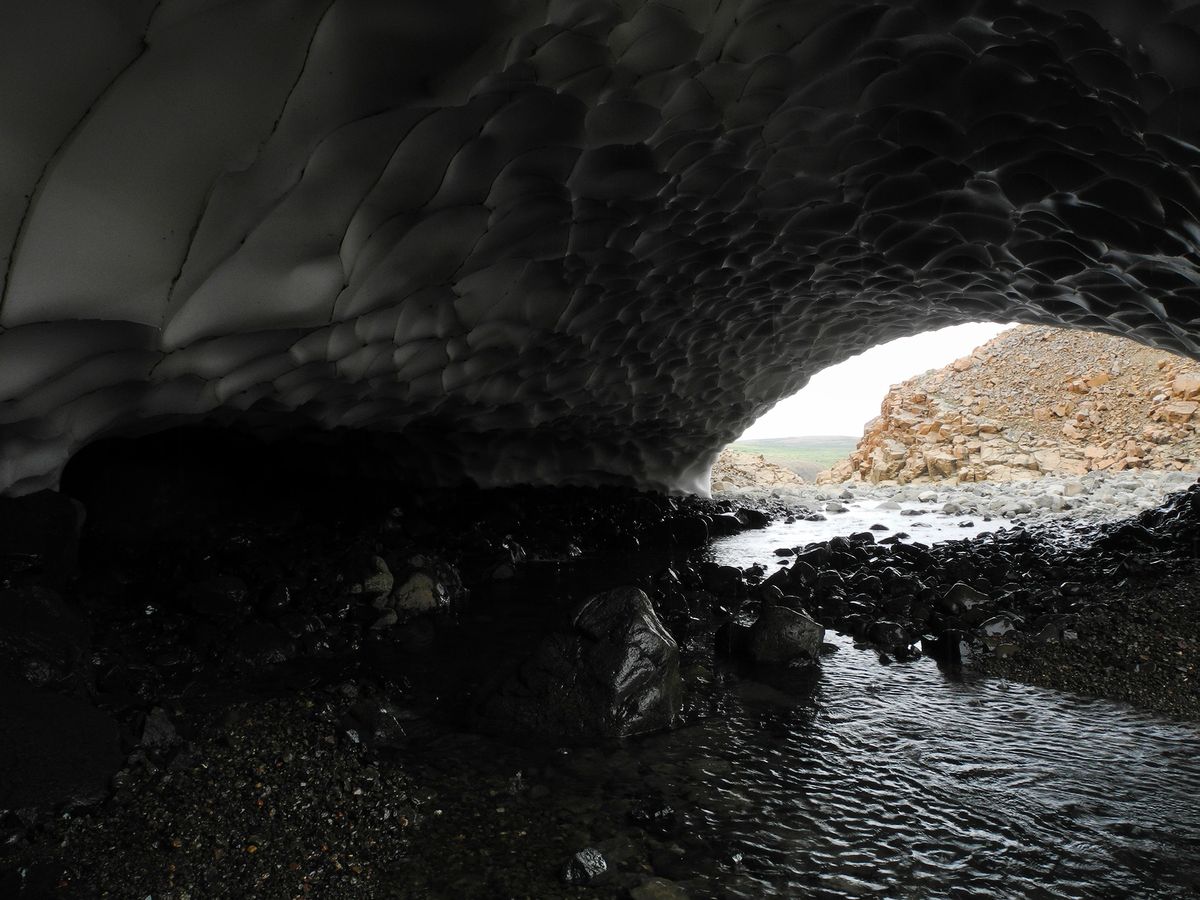#ARCTIC. #SIBERIA. THIS IS TAIMYR. During the Arctic Floating University expedition, scientists explored snowfields in the north of the Novaya Zemlya archipelago. The data can be used to record climate change over short time periods.
A snowfield is a fixed accumulation of snow in places protected from the wind and the sun, which persists after the surrounding snow cover melts (seasonal snowfield) or does not melt throughout the year (permanent snowfield).
“The collected field data, together with satellite information on the studied snowfields, will form the basis for assessing the spatial and temporal variability of snowfields on Severny island, as well as their possible use as climate change indicators over short time intervals”, said, the expedition head Alexander Saburov to TASS.
Snow measurements were carried out on various snowfields in Russkaya Gavan, Murmanets bay, cape Zhelaniya, Ledyanaya Gavan, and Ivanov bay. On each snowfield, pits were dug to analyze the snow mass. They described the features of snow at different levels, noted the layers with the presence of soil, fixed ice crusts, determined the aquifer and water depth.
Snowfields in the Arctic and subarctic regions play an important role in nature. They affect the vegetation diversity and the flora boundary variability, are able to lower the air and water temperature.
Perennial snowfields are an essential part of the glaciation of many Arctic islands and help interpret climate variability and assess their impact on local weather patterns.
The researchers collected material on five snowfields located in different microclimatic conditions and on different landscapes. Some points were examined for the first time.
Recall that the Arctic Floating University is a joint project of the Northern (Arctic) Federal University and the Northern Directorate for Hydrometeorology and Environmental Monitoring.
This year marks the 10th anniversary of the project. Its partners are the Russian Geographical Society, the Russian Federation Ministry for the Far East and the Arctic Development, VTB bank, Novatek, Nornickel, Rosneft and the Arhangelsk region government.
Earlier, scientists in the Arctic took samples of colored snow. We also reported that a previously unknown current was discovered between the Barents and Kara seas, which accelerates the Arctic melting.
Follow us on Telegram, VKontakte.
Text: Ekaterina Maksimova, Photo: Nikolay Shchipko







